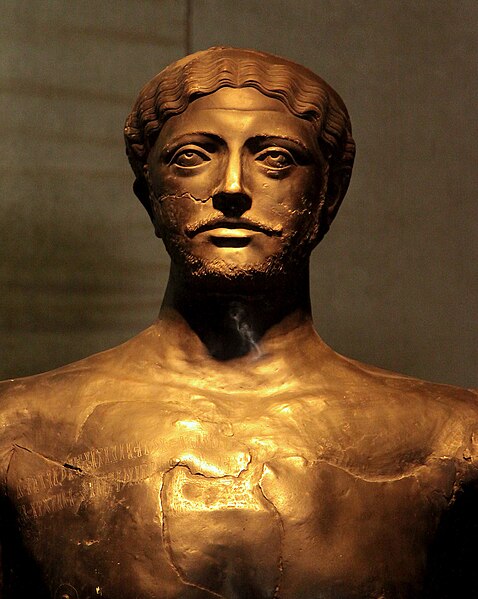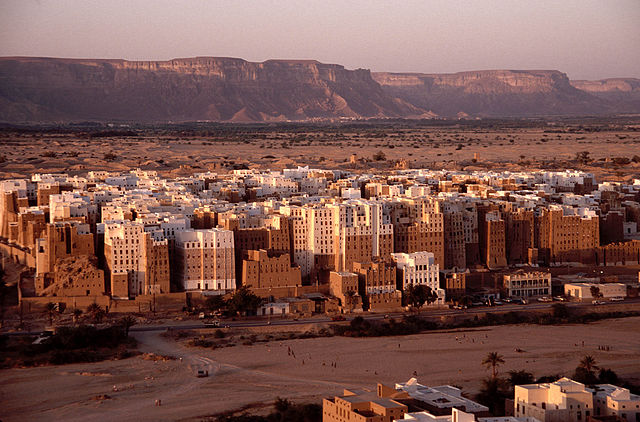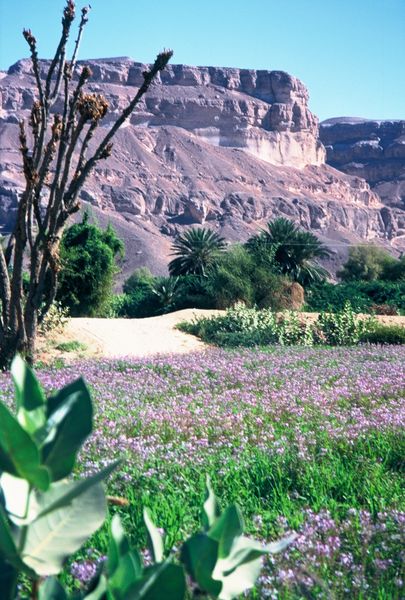The history of Yemen describes the cultures, events, and peoples of what is one of the oldest centers of civilization in the Near East. Its relatively fertile land and adequate rainfall in a moister climate helped sustain a stable population, a feature recognized by the ancient Greek geographer Ptolemy, who described Yemen as Eudaimon Arabia meaning "fortunate Arabia" or "Happy Arabia". Yemenis had developed the South Arabian alphabet by the 12th to 8th centuries BC, which explains why most historians date all of the ancient Yemeni kingdoms to that era.
Sabaean inscription addressed to the moon-god Almaqah, mentioning five South Arabian gods, two reigning sovereigns, and two governors, 7th century BC.
Sabaean gravestone of a woman holding a stylized sheaf of wheat, a symbol of fertility in ancient Yemen
A funerary stela featuring a musical scene, 1st century AD
Himyarite King Dhamar Ali Yahbur II
Hadhramaut is a geographic region in South Arabia, comprising eastern Yemen, parts of western Oman and southern Saudi Arabia. The name is of ancient origin, and is retained in the name of the Yemeni Governorate of Hadhramaut. The people of Hadhramaut are called Hadarem. They formerly spoke Hadramautic, an old South Arabian language, but they now predominantly speak Hadhrami Arabic.
The Old Walled City of Shibam, a UNESCO World Heritage Site
Region close to Seiyun in the Hadhramaut Valley
The city of Tarim
Hajjarin in Wadi Dawan








